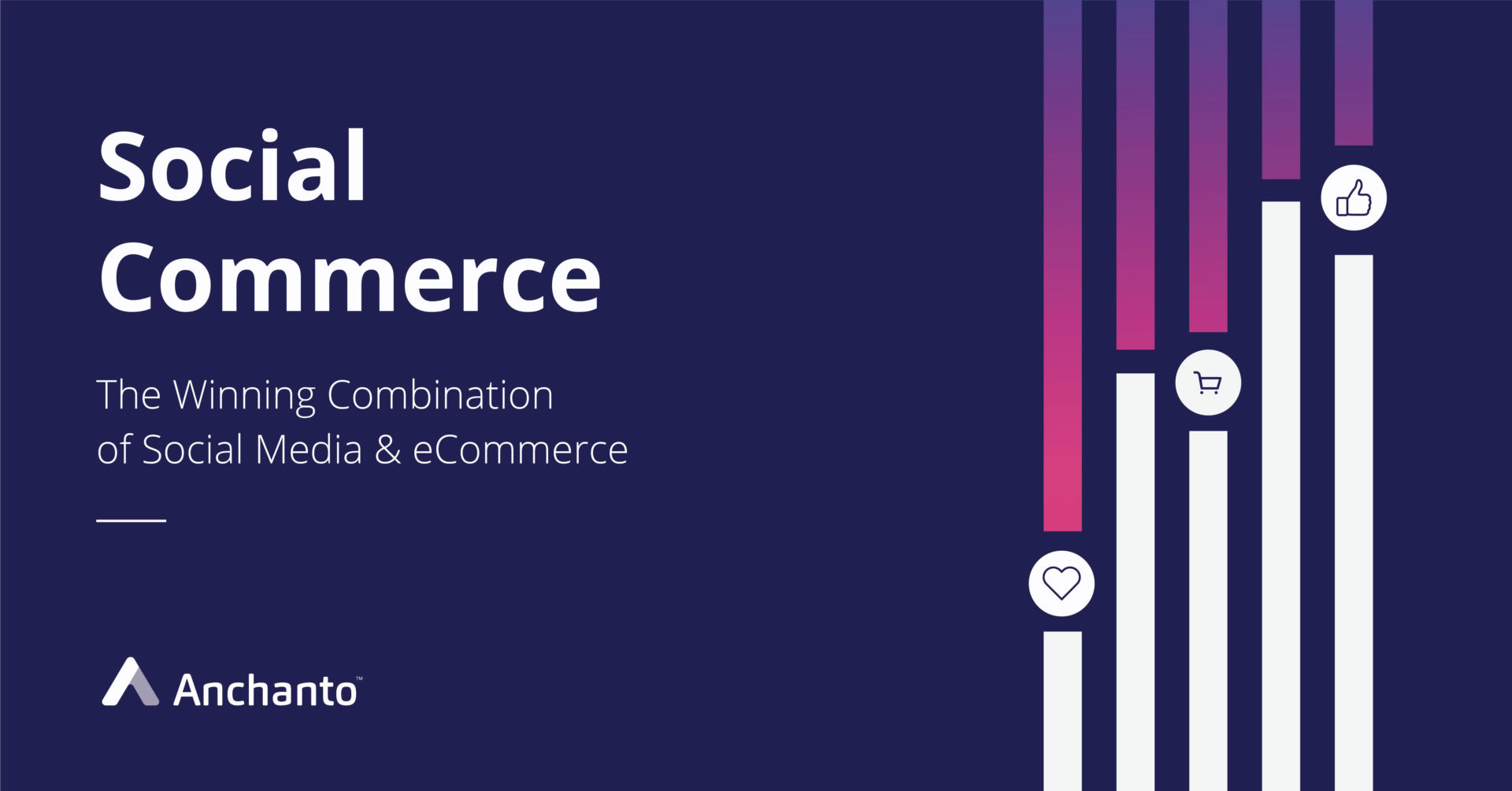
Social Commerce: The Winning Combination of Social Media and eCommerce
Nowadays, social networks have become an integral part of everyday life. Facebook, TikTok, Instagram, Snapchat, Twitter, and Pinterest among others continue to engage users with relatable content, making them spend hours scrolling through their feeds.
With almost 90% of Asia Pacific’s population surfing through mobile commerce, brands and retailers put this media to greater use, thus inventing a fairly new concept called Social Commerce.
Earlier, businesses simply relied on social channels to improve their brand presence and connect with their customers. But, social commerce today has become far more than that. Today, these channels have evolved to become another medium for online shopping.
In a joint survey conducted by Magento and Hootsuite, almost 6 in 10 consumers claimed that one-quarter of their online shopping is influenced by Facebook and YouTube.
So, what exactly is social commerce in Southeast Asia and how can you benefit from it?
What is Social Commerce
Meaning & Practices
Let’s begin by understanding ‘what is social e-commerce’.
Investopedia explains social commerce as ‘The use of networking websites such as Facebook, Instagram, & Twitter as vehicles to promote and sell their products.’ Although the definition may seem complex, implementing it is pretty simple. To put it in context, as users interact with unique content, brands, and businesses leverage social presence to achieve their marketing goals successfully.
These practices include—
- Offering discounts and promotions, to users who share products on their social feeds.
- Providing personalized buying options and a seamless browsing-to-checkout journey.
- Attracting users with striking graphics such as videos and images, compelling product descriptions, interesting posts, etc.
- Encouraging user-generated content such as product endorsements, reviews, and recommendations, etc.
In a nutshell, social commerce companies create a mini-shopping experience directly onto the users’ social pages and motivate them to shop by interacting with the products and services. Consumers can directly buy products, or share them with their friends and followers, or otherwise review them directly on these social vehicles.
Difference Between Social Commerce and E-commerce
If you run a business, you’ve probably heard of social commerce vs e-commerce. But what do they mean? Well, they’re two different ways your customers can buy from you online.
Understanding these ideas and the difference between Social commerce vs E-Commerce is super important for making smart choices about how your brand sells products online.
E-Commerce is mainly about buying and selling products online through dedicated stores or platforms like standalone websites, marketplaces (think Amazon or eBay), or branded stores on platforms like Shopify.
On the flip side, social commerce blends social media into the buying and selling scene. It means using platforms like Facebook, Instagram, or Pinterest to make transactions right within the social platform.
To help you understand the key differences between social commerce vs E-commerce, here’s a chart we put together.
Social Commerce Types
Imagine scrolling through Instagram or Facebook and stumbling upon a cool T-shirt you just have to have. That’s a social commerce example in action!
Now, let’s explore some various types of social commerce in detail:
- Social shopping platforms
These are platforms like Instagram Shopping or Facebook Marketplace, where you can browse and buy products directly within your favorite social media app. - Social media marketplaces
Platforms such as Facebook Groups where users can buy and sell items to each other, create a marketplace within the social network. - Peer-to-Peer selling
It’s like having a virtual garage sale on social media, where you sell things directly to your friends or followers, often seen on platforms like Instagram. - Social commerce integrations
Some e-commerce platforms allow merchants to showcase and sell their products directly within social media posts or ads, often through integrations like those offered by Shopify. - Influencer marketing
Influencers collaborate with brands to promote products to their followers, leveraging their influence to drive sales through sponsored content. - User-generated content
Reviews, ratings, and recommendations are shared by regular users on social media, which can help others decide what to buy.
Popular Social Commerce Platforms
Did you know that certain social media platforms aren’t just for connecting with friends and sharing memes anymore? In fact, they’ve become booming marketplaces where you can shop for your favorite products without ever leaving the app. Awesome, right?
On that note, let’s check out some popular social commerce sites that are changing the way we shop online.
- Instagram
Think of it as a photo album where you not only see amazing pictures but also shop from them. You might spot a trendy outfit or a stylish gadget in a post, and with features like Instagram Shopping, you can tap on it and buy it right there, without leaving the app. - Facebook
It’s like a virtual marketplace where you can find everything from clothes to furniture. Facebook Marketplace lets you buy and sell items locally, so you might discover a hidden gem being sold nearby. Plus, businesses can set up their own online stores with Facebook Shops, making it easy to browse and buy their products without ever leaving Facebook. - Pinterest
Picture a digital vision board where you collect ideas for home decor, fashion, recipes, and more. Pinterest is all about inspiration, and when you find something you love, you can click on it to learn more or buy it directly from the website it’s linked to. It’s like window shopping online but with a handy “Buy” button. - TikTok
It’s not just for funny videos any more– TikTok is also a place to discover and shop for products. Brands and creators often showcase products in their videos, and with features like “Shop Now,” you can click on a product you like and buy it instantly, all while enjoying your favorite TikTok videos! - Snapchat
Snap a photo, add some filters, and discover new products! Snapchat’s “Shop Now” feature lets you swipe up on ads to buy items directly from the app. Plus, with augmented reality (AR) try-on features, you can virtually try on sunglasses, makeup, and more before making a purchase, making shopping on Snapchat a fun and unique experience.
Fascinating Social Commerce Statistics
Want to know some interesting facts [1] about social commerce? Read on:
- Social commerce revenue is projected to hit $6.2 trillion by 2030.
Between 2023 and 2030, social media retail is expanding by 32% annually, resulting in significant growth. This makes 2024 the best time for businesses to establish their presence in social commerce.
If not now, then when?
- The countries with the highest percentages of social commerce buyers are Thailand (88%), India (86%), UAE (86%), and China (84%).
It’s surprising, but the United States is actually 11th on the list of countries with the most online shoppers, with 63% buying through social media.
Still, that’s a huge number that keeps growing. In the US, social commerce sales are expected to pass $30 billion soon, and by 2025, they could reach $80 billion.
- By 2025, Millennials will still be the ones buying the most through social media, making up 33% of all purchases.
According to Accenture’s predictions, in 2025, a third of the world’s social media shopping spending will come from Millennials. Following closely behind are Gen Z with 29% and Gen X with 28%.
Benefits of Social Commerce
Although social commerce positively impacts the overall sales volume, that’s not the only benefit you can get.
1. Improved Customer Engagement
Social networks open a two-way communication channel between your business and customers. It does not just help you to promote your products, but also, enables your audience to relate with them. Users are more likely to read reviews, comments and opinions from previous customers on these channels. This further enhances the authenticity of your business and helps them make an informed decision accordingly.
Some channels go further than this, and help you build a seamless shopping experience with them. For example, Instagram has introduced Shoppable Instagram Feed that lets you tag your products collected from user generated content or your own posts and embed it directly to your e-Commerce websites. So, with just two or three clicks, shoppers can easily navigate to the right product page and purchase that specific item.
2. Consistent audience growth
The primary aim of social commerce in Singapore is to build a consistent audience. As per Kiepo’s analysis, Southeast Asia has a new user generation rate at 16.98%. These statistics highlight the importance of social channels in the lives of Generation Z and how your business can expand its scope of advertising and marketing; Resultantly, thus exposing your sales activities to a newer user base every time.
Since you acquire new shoppers through these channels, it is equally important you maintain the same level of relationship with every user that interacts with your business. By using the right methods to connect with them, you encourage the shoppers to resonate with your brand, and they are more likely to recommend your products.
Having a social commerce strategy therefore allows you to roll out new audience growth and consistently retain your existing consumers.
3. Increased average order value
It is no secret that millennials are the primary users of social channels. Brands and businesses now understand the dynamics of the millennial market and how they need to cater to them.
Seamless shopping experience, direct checkout, interactive lookbooks, etc. are a great way to convince these users to shop more online.
Also, it increases your average order value (average amount customers are likely to spend in one go) based on the content shared on your audience’s social page, the ease of purchase cycle regardless of the device they use, what their friends and followers are shopping for these days, etc.
The point is, that social media can influence users to spend more, and you can leverage this information to curate better suggestions for your shoppers.
Furthermore, integrating your multichannel management platform with your social channels can help you synthesize the datasets into actionable insights.
4. Higher search engine ranking
It is already proven that social media not only increases traffic to your website but also, leads to direct transactions. How? Better engagement helps you drive relevant content according to the users’ interests, thus motivating them to make frequent purchases.
This further helps you to create link build-up, recommendations, feedback, comments, etc. Such organic actions improve your digital footprint, resulting in maximizing your search engine ranking.
5. Improved customer insights
Social commerce simplifies your efforts to measure and evaluate business insights. Since all these channels come with ready metrics for impressions, engagement, and reach, you can measure them regularly. It helps you group your audiences appropriately, thus, sharing the right content with all of them.
Depending on the objectives and KPIs you set for social commerce, you can formulate an effective plan and determine what is beneficial for your business.
A/B testing your recent initiatives, monitoring your content relevancy and studying your followers and prospects helps you in understanding specific insights.
Social commerce is a trend that is going to get much stronger in the coming years. The Social Commerce Global Market and Trajectory Report projects this trend to grow to $604.5 billion in the next seven years. It is not only going to help you expand your brand presence but also enable you to create winning retail strategies.
So, when the competition grows, ensure that you invest the right amount of money, time, and effort to maximize your chances of success through Social Commerce.
How to Execute a Social Commerce Campaign
A social commerce campaign is important because it helps businesses reach more people and sell more products through social media. It’s where you can showcase your products to a huge audience, engage with customers, and boost sales– all from the comfort of your favorite social media apps.
Without an effective social commerce campaign, businesses might miss out on the opportunity to connect with potential customers and grow their brand online.
Here’s how you can execute a successful social commerce campaign:
- Set clear goals:
Start by defining your campaign objectives. Are you looking to increase sales, boost brand awareness, or drive website traffic? Having clear goals will help you tailor your campaign strategy accordingly. - Know your audience:
Understand who your target audience is and where they are most active on social media. Use demographic data, insights from past campaigns, and market research to create buyer personas and customize your messaging to resonate with your audience. - Pick the right platform: Select the social media platforms that align with your audience demographics and campaign goals. Each platform has its own strengths and features, so choose the ones that best suit your brand and objectives.
- Create compelling content: Make content that people will love, like eye-catching pictures or funny videos, and make sure it tells them what you’re selling and why they should care.
- Implement social commerce features: Take advantage of social commerce features offered by platforms like Instagram Shopping, Facebook Shops, and Pinterest Buyable Pins. Make it easy for users to browse and purchase products directly from your social media posts.
- Leverage influencers: Collaborate with influencers who have a strong presence and influence within your target audience. Partnering with influencers can help increase brand visibility, credibility, and engagement, leading to higher conversion rates.
- Promote your campaign: Get the word out there with sponsored posts, ads, or giveaways to make sure people see your campaign.
- Monitor and measure performance: Keep an eye on how your campaign is doing by tracking key performance metrics such as engagement, reach, click-through rates, conversion rates, and return on investment (ROI).
- Learn and improve: Use what you’ve learned from your campaign to make your next one even better, so you can keep growing your business.
How Anchanto helps you win with Social Commerce
Anchanto makes it super easy for businesses to succeed in social commerce.
Here’s how:
- Multi-channel integration
Anchanto seamlessly integrates with various social media platforms, allowing businesses to manage their inventory, orders, and fulfillment processes across multiple channels from a single dashboard. This saves time and ensures everything runs smoothly. - Order management
With Anchanto, you can process and fulfill orders from social media platforms instantly. We take care of updating your inventory and sending shipping notifications automatically. - Inventory management
We help you keep track of how much stock you have left across all your social commerce channels. This prevents running out of products and keeps your operations running smoothly. - Analytics and insights
With Anchanto’s analytics, you can see how your social commerce is performing. This helps you understand trends, see what your customers like, and make smart decisions to grow your business. - Customer support
Anchanto’s support team is there to help you with anything you need. Whether it’s technical help, training, or advice on strategy, we’re always ready to assist you.
To wrap it up, with Anchanto on its side, businesses can truly unlock the full potential of social commerce and stay ahead of the competition.
Reach out to us today to know more!
FAQs
1. What is Social Commerce?
Social commerce is when you shop for products directly on social media, like Instagram or Facebook, instead of going to a separate website or store.
2. How does Social Commerce Work?
Social commerce leverages social media platforms like Facebook and Instagram to seamlessly integrate shopping experiences, allowing users to discover, browse, and purchase products directly within their social feeds.
3. What are Some Social Commerce Examples?
- Purchasing a pair of shoes directly from a brand’s Instagram Shop.
- Buying handmade crafts from a seller’s Facebook Marketplace listing.
- Discovering and purchasing a new gadget through a sponsored post on TikTok.
4. Why is Social Commerce Important?
Social commerce matters because it lets businesses sell directly on social media, reaching more people and boosting sales right where customers spend their time online.
References – 1


